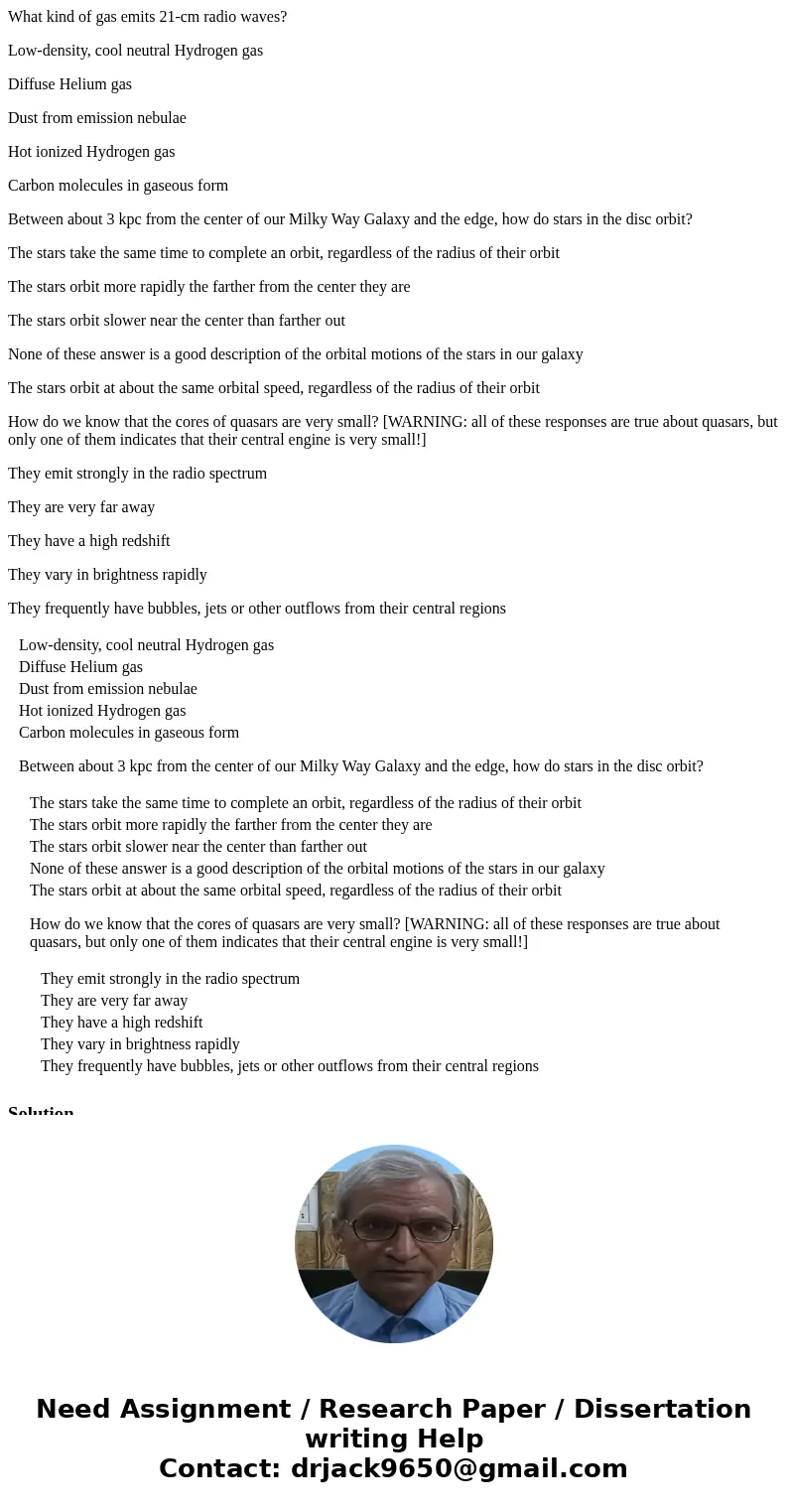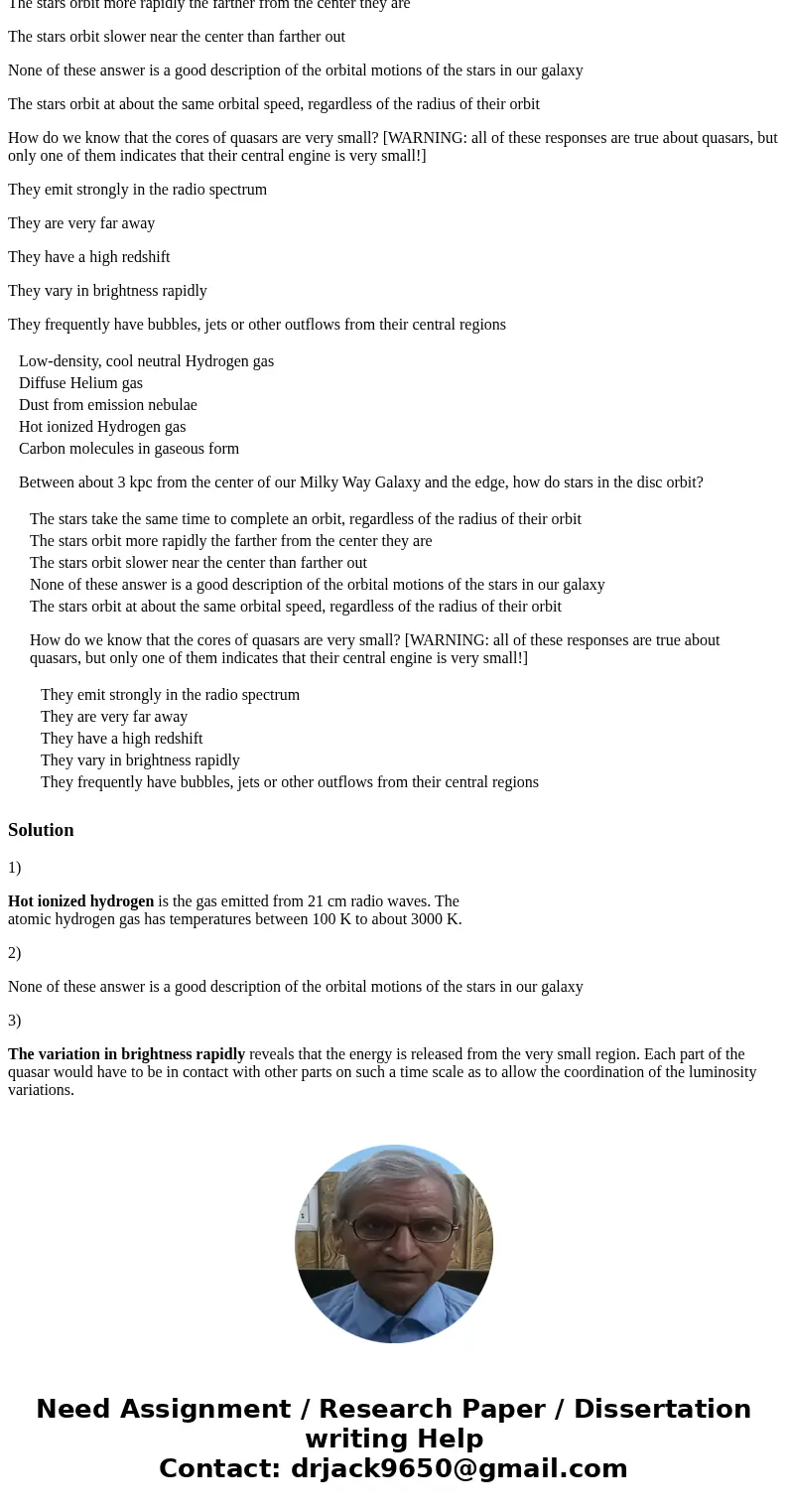What kind of gas emits 21cm radio waves Lowdensity cool neut
What kind of gas emits 21-cm radio waves?
Low-density, cool neutral Hydrogen gas
Diffuse Helium gas
Dust from emission nebulae
Hot ionized Hydrogen gas
Carbon molecules in gaseous form
Between about 3 kpc from the center of our Milky Way Galaxy and the edge, how do stars in the disc orbit?
The stars take the same time to complete an orbit, regardless of the radius of their orbit
The stars orbit more rapidly the farther from the center they are
The stars orbit slower near the center than farther out
None of these answer is a good description of the orbital motions of the stars in our galaxy
The stars orbit at about the same orbital speed, regardless of the radius of their orbit
How do we know that the cores of quasars are very small? [WARNING: all of these responses are true about quasars, but only one of them indicates that their central engine is very small!]
They emit strongly in the radio spectrum
They are very far away
They have a high redshift
They vary in brightness rapidly
They frequently have bubbles, jets or other outflows from their central regions
| Low-density, cool neutral Hydrogen gas | ||||||||||||||||||||||||||||||||
| Diffuse Helium gas | ||||||||||||||||||||||||||||||||
| Dust from emission nebulae | ||||||||||||||||||||||||||||||||
| Hot ionized Hydrogen gas | ||||||||||||||||||||||||||||||||
| Carbon molecules in gaseous form Between about 3 kpc from the center of our Milky Way Galaxy and the edge, how do stars in the disc orbit?
|
Solution
1)
Hot ionized hydrogen is the gas emitted from 21 cm radio waves. The
atomic hydrogen gas has temperatures between 100 K to about 3000 K.
2)
None of these answer is a good description of the orbital motions of the stars in our galaxy
3)
The variation in brightness rapidly reveals that the energy is released from the very small region. Each part of the quasar would have to be in contact with other parts on such a time scale as to allow the coordination of the luminosity variations.


 Homework Sourse
Homework Sourse